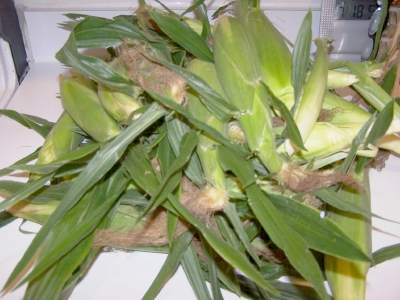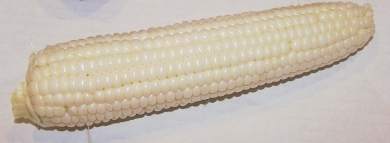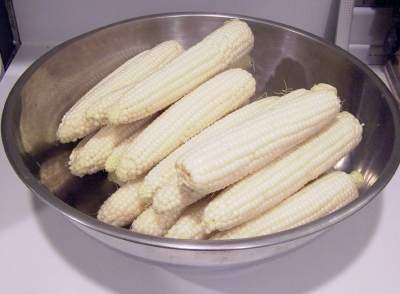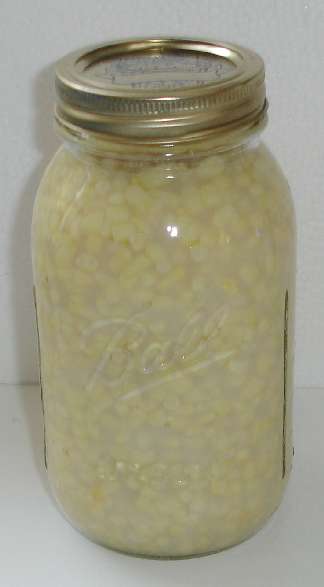
Corn U-Pick Orchards in Far Northwest Oregon in 2025, by county
Below are the U-Pick orchards and farms for corn that we know of in this area.
Not all areas of a state have corn farms that are open to the public. If you know of any others, please tell us using the add a farm form!
Remember to always check with the farm's own website or Facebook page before you go - or call or email them if they don't have a website or Facebook page. Conditions at the farms and crops can change literally overnight, so if you want to avoid a wasted trip out there - check with the farm directly before you go! If I cannot reach them, I DON'T GO!
PLEASE report closed farms, broken links and incorrect info using the "Report Corrections" form below.
New! As inflation remains high, see this page for
reliable (tested) brands of generic canning lids at lower
costs, and cost-saving measures for
getting fruit and vegetables and home canning.
If you are having a hard time
finding canning lids, I've used these, and they're a great price & ship in 2 days.
New! Road tripping and camping is a great way to have a fun, safe and inexpensive family trip. The national and state parks and monuments are open, and campgrounds usually cost between $10 and $40 per night. September to November is the best camping weather. See our new website Road Tripping and Camping.com for tips, tricks, guides, checklists and info about parks, monuments and other places to visit.
New! We just went live with our latest website, FunFactoryTours.com - As they name implies, you can find a fun factory tour, including chocolate, automobiles, historical forts and sites, famous buildings, Active Federal facilities even fun geology: like fossils and volcanic areas
Washington County
- Dairy Creek Farm and Produce - Uses natural growing practices, beans, blackberries, broccoli, corn (sweet), cucumbers, eggplants, herbs or spices, melons, peas, peppers, pumpkins, summer squash, winter squash, strawberries, tomatoes, other vegetables, Honey from hives on the farm, Fresh eggs, picnic area, farm animals, birthday parties, school tours, events at your location (call for info)
23295 NW highway 47, Buxton, OR 97109. Phone: 503 324 7819. Email: dd@dairycreekfarm.com. Open: 10 am to 6:45 pm daily. Directions: . Click here for a map and directions. Payment: Cash, only. We use natural practices, but are not yet certified OrganicDairy Creek Farm & Produce is a small family farm near Banks, OregonWe grow fruits, vegetables and herbs using natural organic practices for our local community distributing through a produce stand at our farm along with local community farmer's marketsAdditionally, we have an apairy providing us with a supply of local honey and all the other products we create from what we grow and the bees supplynatural 100% raw honey to our patornsWe currently have two honey options based on where the hives were placed either in clover or blackberry fields because the bees main food source has an effect on the color and flavor of the honey(UPDATED: May 9, 2025, JBS)
Comments from a visitor on November 09, 2010: "We visited the Dairy Creek Farm and had a WONDERFUL experienceMy husband enjoyed chatting with the very friendly farmer and his young sons while I picked bushels of gorgeous chemical..
[ Click here to update the listing ] - Duyck's Peachy-Pig Farm - apples, apricots, asparagus, beans, blackberries, blueberries, blackcaps, Chehalems, loganberries, marionberries, raspberries, strawberries, youngberries, cherries, cukes (reg & lemon), corn, dill, eggplants, figs, filberts, garlic, grapes, honey, onions, (reg & Walla Walla), peaches, pears, peppers (Bell & hot), prunes, plums, pumpkins,pumpkins in patch, rabbits, rhubarb, tours, tomatoes, walnuts, weaner pigs, grapes & golf balls.
34840 SW Johnson School Road, Cornelius, OR 97113. Phone: 503-357-3570. Email: duycks@coho.net. Open: Tuesday to Saturday from 9am to 6pm, Sunday from 12noon to 6pm, and closed all day on Monday. Directions: 4 mile S of Hillsboro on Hwy 219. R on Simpson Road R on Johnson Sch. Road go 3 miles or take 10th St. out of Cornelius 3 miles L at golf course, R on Johnson School Road 1 mile. Usually available: May- December . Click here for a map and directions. U-pick & we pick. Bring containers, children & food stamps welcome. See & touch animals. Tours: Schools, birthday parties, pumpkins in patch, etc. May thru Oct. Picnic area, panoramic view, natural well water. Custom filbert harvesting. (sometimes misspelled "Duyuck" or "Dyuck" or "Duyk") [ ] (UPDATED: May 9, 2025, JBS)
Comments from a visitor on June 27, 2023:(positive) "Duyck's is my favorite all around u-pick experience in the Hillsboro area. They are a multi-generational, family-run business. They grow a little of everything, making for a fun outing with kids! Prices are fair, people are super friendly, and there are beautiful flowers and animals everywhere. What more could I ask for?!?!"
Comments from a visitor on May 12, 2016: (positive) "My friends and I met here for a play date with our children last season. It was a wonderful experience, and I plan to go back this summer. We bought peaches, picked blackberries and raspberries, many different varieties. The children helped at fi..
[ Click here to update the listing ]
Corn
Corn Picking Tips, Recipes and Information

Corn reaches it's peak sweetness and flavor when the kernels are full, and just touching each other, like a good set of teeth! They should not be bloated and smushed so tightly that there is no space left at all. The bloated overripe ears will have a bland, starchy taste.
Here's what to look for:
- The tips of the silks coming out of the ear should be a light brown.
- If you break a kernel with your fingernail, the liquid should be slightly milky in color.
- The ears should be filled out and have developed good girth but not bloated.
Harvesting
To harvest, snap off the ears by hand with a quick, firm,
downward push; then twist and pull.

Avoid twisting or yanking
the ears, as this can damage the stalk or the ear itself.
Storing the corn
Corn is at its prime eating quality on the stalk for only 72 hours before becoming over mature. The most important factor is cooling it as soon as possible after harvesting it. Get it into the fridge or cover it with ice! Many farmers say you should remove the shucks right away, too. I've found that removing most of the shuck, but leaving a few leaves to cover each ear is best to prevent the kernels from drying out. See this page for more about storing corn before using it.
Cooking:
Corn serving trays, clear plastic holds an ear of corn on the cob
Corn holders: jumbo yellow
Corn Kernel Cutter - easily cut corn kernals from the cob
Corn Kernel Cutter: This one gets great reviews, too, by Pampered Chef, it has a large Ergonomic Handle
The worst mistake people make is overcooking corn. In fact, corn isn't really cooked; it's just heated up. If you cook it form more than a few minutes (3 minutes), then you are simply breaking down the sugars and turning a nice, crisp sweet ear into bland mush. It's not a pot roast; the purpose of heating it is NOT to break down the cells, just to heat them to bring out the flavor and melt the butter!
Here's how to cook the corn:
- Fill a large pot (large enough so the shucked ears can fit inside, laying down) about 2/3 full of water and start bring it to a boil
- Shuck the ears, and snap off the stalk end and the very tip of ear (especially if you will use "corn stickers" , (handles) to hold the ears.
- When everyone is sitting down at the table and you are serving the rest of the meal, put the corn in the boiling water and set the time for 3 minutes.
- After 3 minutes, using tongs, retrieve the ears and serve them with butter (Corn boats are wonderful for corn!
Freezing Corn
You can easily freeze the sweet corn and have that great taste in the dead of winter!
Canning Corn
This too, is easy... but it DOES require a Pressure Canner. You cannot safely do this with a water bath canner. Food poisoning is no joke!
- Here is how to can corn!
- how to make canned creamed corn.
- Southern Chow-Chow (also called Piccalilli)
- Pickled corn relish
Other corn recipes
Other Local Farm Products (Honey, Horses, Milk, Meat, Eggs, Etc.)
(NOT pick-your-own, unless they are also listed above)
- Farm markets and roadside stands
- Local Honey Finder
- Local Meat, Milk and Eggs
- Venues: Farms, Wineries, Orchards for your event, wedding or party
- Easter egg hunts
- Children"s consignment sales
- Fruit and vegetable festivals
- Winery tours and wine tastings
- Horse rides, stables, lessons, trails
- Maple Syrup farms and sugarworks
- Bed & Breakfasts on Farms, Wineries, Ranches and Orchards
- Pumpkin patches
- Corn mazes
- Zombie Paintball venues
- Christmas Tree Farms & lots
- Environmental resources
- Consumer fraud information
- Wholesale food sources
- Resources for Farmers
Looking for canning equipment and supplies?
Water bath canner with a jar rack
Pressure canners for gas, electric and induction stoves: Presto 23Qt or T-fal 22Qt
Canning scoop (this one is PERFECT)
Ball Blue book (most recent version)
Jars: 8oz canning jars for jams
Find Other types of farms:
Farm markets and roadside stands
Road trips and camping resources
Local Honey, apiaries, beekeepers
Consumer fraud and scams information
Home canning supplies at the best prices on the internet!
Maple Syrup Farms, sugarworks, maple syrup festivals
Environmental information and resources
Farms For Your Event for birthday parties, weddings, receptions, business meetings, retreats, etc.
Festivals - local fruit and vegetable festivals
Get the
most recent version of
the Ball Blue Book
With this Presto 23 quart pressure canner and pressure cooker, you can "can" everything, fruits, vegetables, jams, jellies, salsa, applesauce, pickles, even meats, soups, stews. Model 01781

You can make jams, jellies, can fruit, applesauce, salsa and pickles with water bath canners, like this Granite Ware 12-Piece Canner Kit, Jar Rack, Blancher, Colander and 5 piece Canning Tool Set

